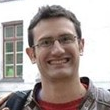Quantum Chaos and Complexity
A special issue of Entropy (ISSN 1099-4300). This special issue belongs to the section "Quantum Information".
Deadline for manuscript submissions: closed (15 September 2019) | Viewed by 11650
Special Issue Editors
Interests: problem of the arrow of time; interpretation of quantum mechanics; nature of information; foundations of statistical mechanics; philosophy of chemistry
Special Issues, Collections and Topics in MDPI journals
2. CONICET, Instituto de Física La Plata, Universidad Nacional de La Plata, La Plata B1900, Argentina
Interests: quantum chaos; classical limit; information geometry; dynamical systems; mathematical physics
Interests: foundations of quantum mechanics; quantum information theory; quantum probabilities; quantum logic
Special Issues, Collections and Topics in MDPI journals
Interests: interpretation of quantum mechanics; quantum decoherence; classical limit of quantum mechanics; quantum information theory
Special Issues, Collections and Topics in MDPI journals
Special Issue Information
Dear Colleagues,
The research on quantum chaos finds its roots in the study of the spectrum of complex nuclei in the 1950s and the pioneering experiments in microwave billiards during the 1970s. This field is usually defined as the study of the connection between quantum mechanics and classical chaotic behavior, in order to understand how a well-defined characterization of the stationary and dynamical aspects of classical chaos emerges, both in the energy and in the time domains, respectively.
However, research on quantum chaos has certainly extended its scope during recent decades, due to the increasing discovery of connections with other disciplines in physics. It is nowadays an active field of research that has become of fundamental importance in the study of the properties, dynamics and control of complex quantum systems, and has found applications in a vast range of phenomena: nonlinear quantum dynamics, quantum complex networks, chaotic scattering in open systems, phase transitions in mixed quantum dynamics, Anderson localization, atoms in strong fields, etc.
Prof. Dr. Olimpia LombardiDr. Ignacio Gómez
Dr. Federico Holik
Dr. Sebastian Fortin
Guest Editors
Manuscript Submission Information
Manuscripts should be submitted online at www.mdpi.com by registering and logging in to this website. Once you are registered, click here to go to the submission form. Manuscripts can be submitted until the deadline. All submissions that pass pre-check are peer-reviewed. Accepted papers will be published continuously in the journal (as soon as accepted) and will be listed together on the special issue website. Research articles, review articles as well as short communications are invited. For planned papers, a title and short abstract (about 100 words) can be sent to the Editorial Office for announcement on this website.
Submitted manuscripts should not have been published previously, nor be under consideration for publication elsewhere (except conference proceedings papers). All manuscripts are thoroughly refereed through a single-blind peer-review process. A guide for authors and other relevant information for submission of manuscripts is available on the Instructions for Authors page. Entropy is an international peer-reviewed open access monthly journal published by MDPI.
Please visit the Instructions for Authors page before submitting a manuscript. The Article Processing Charge (APC) for publication in this open access journal is 2600 CHF (Swiss Francs). Submitted papers should be well formatted and use good English. Authors may use MDPI's English editing service prior to publication or during author revisions.
Keywords
- Quantum chaos
- Chaos and correspondence principle
- Quantum chaos, decoherence and classical limit
- Quantum ergodicity and mixing
- Complex quantum systems
- Quantum nonlinear systems
- Quantum complex networks
- Control of complex quantum systems
- Information, disorder and complexity measures
- Information theory and quantum chaos
- Quantum statistical complexity
- Random matrix theory
- Characteristic time scales
- Quantum billiards
- Open chaotic systems
- Quantum chaotic maps
- Periodic orbit theory
- Quantum expansion of trace formulas








